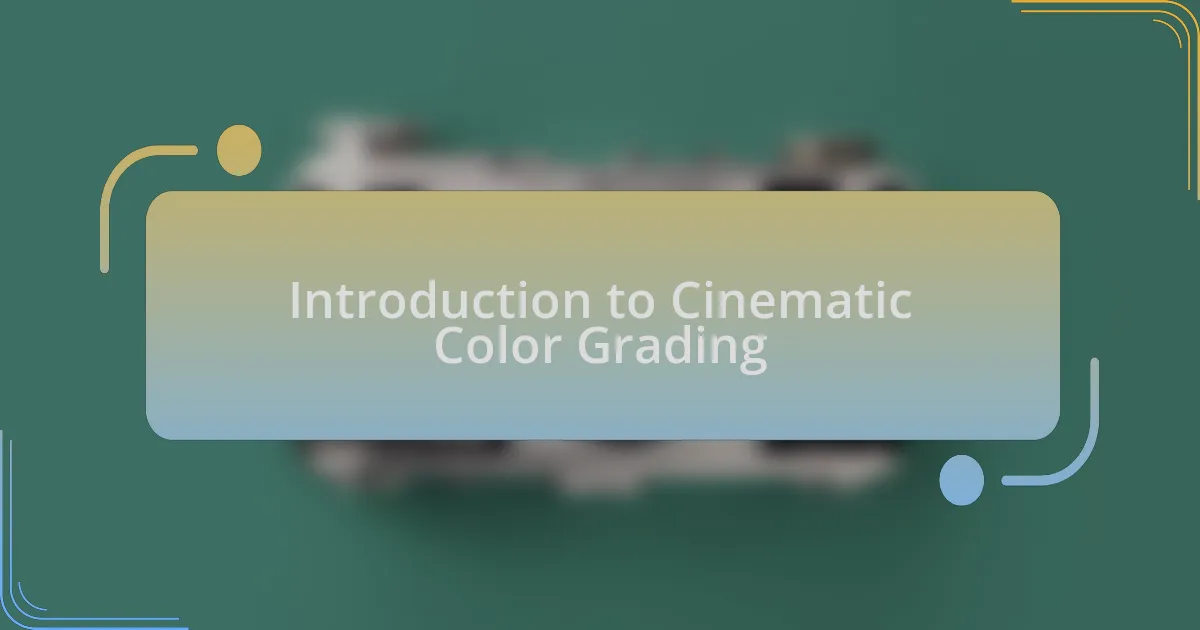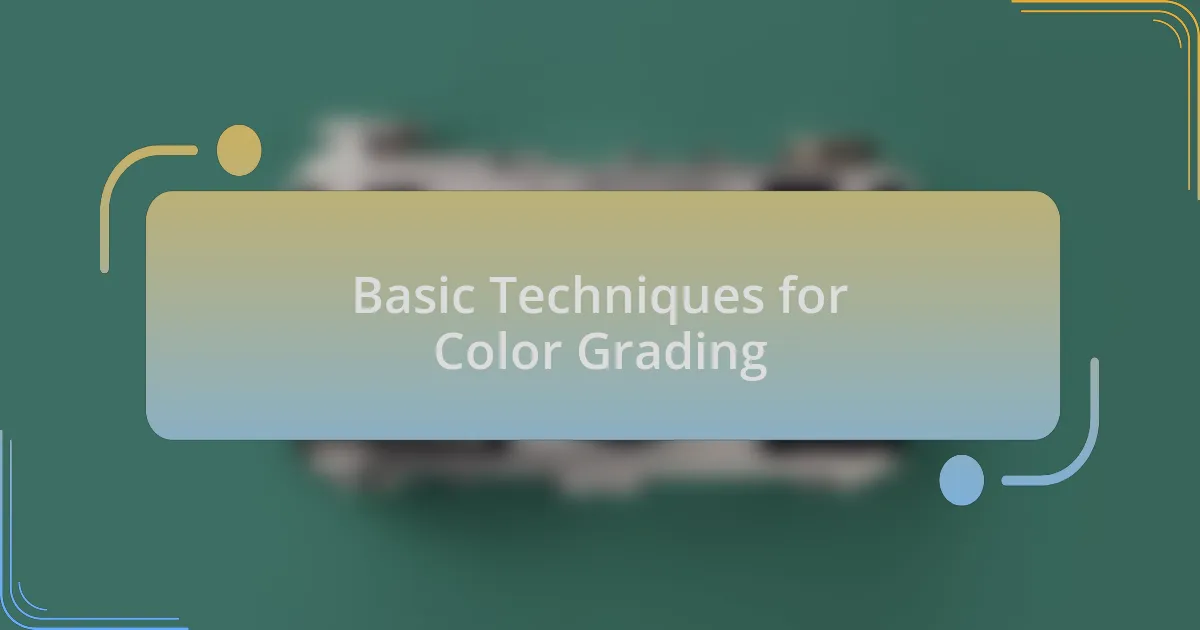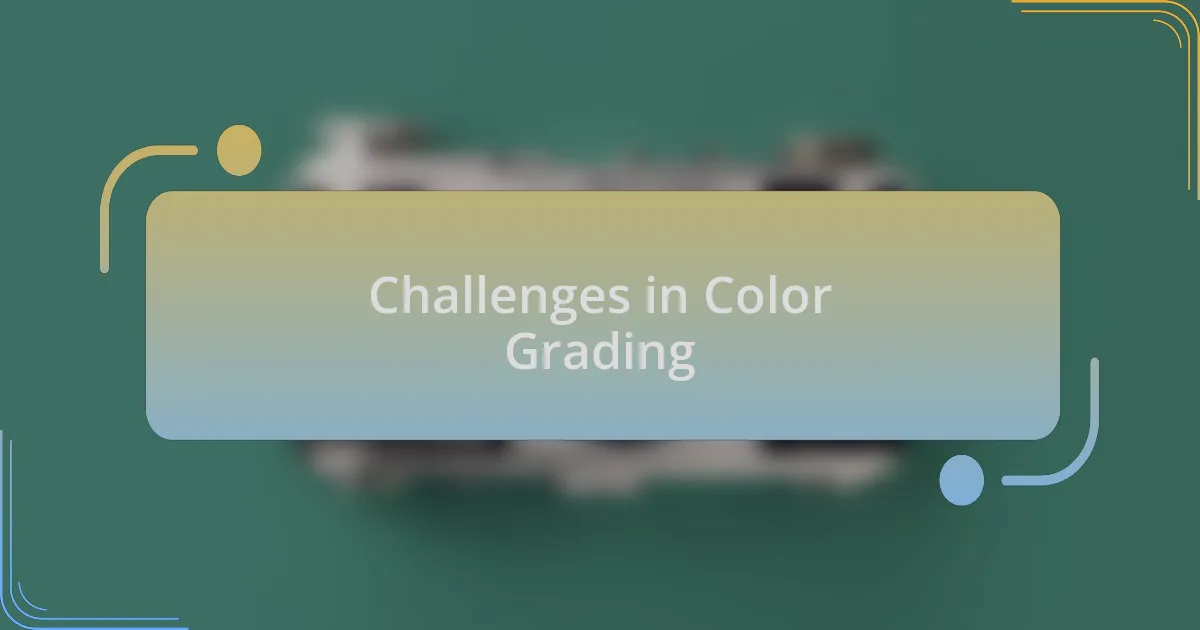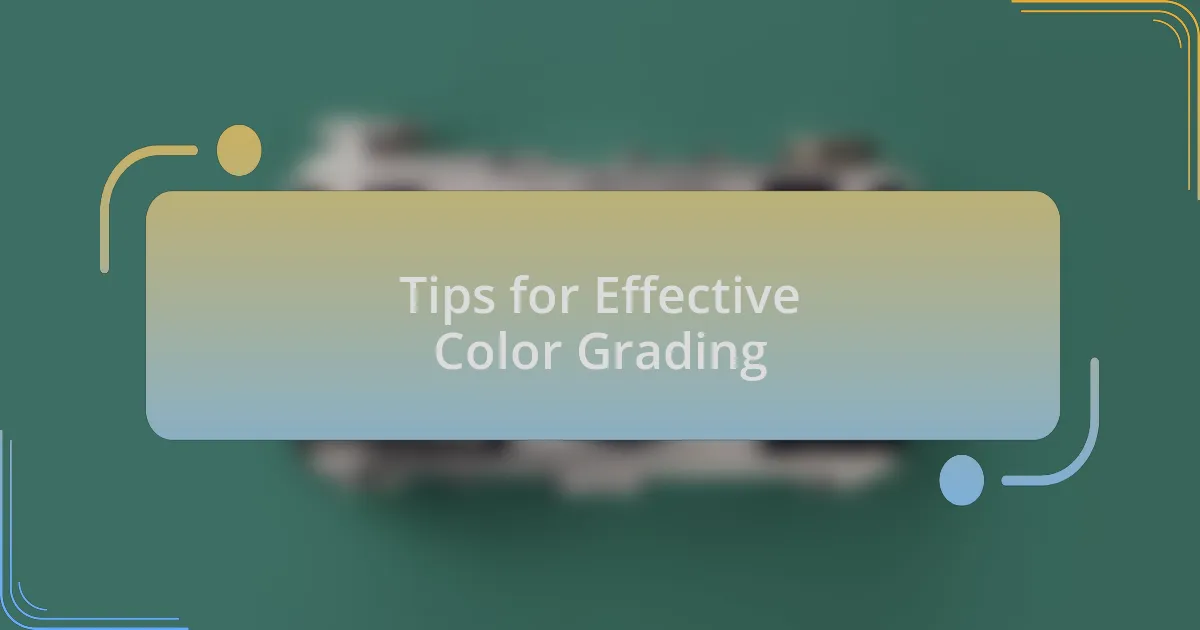Key takeaways:
- Cinematic color grading enhances visual storytelling by evoking emotions and influencing audience perception through color choices.
- Basic techniques include using the color wheel, adjusting brightness and contrast, and applying LUTs to streamline the grading process.
- Challenges include maintaining consistency across shots, dealing with color calibration across different screens, and balancing emotional impact.
- Effective color grading involves starting with a reference, ensuring consistency, and experimenting with colors to evoke specific moods.

Introduction to Cinematic Color Grading
Cinematic color grading is like the finishing touch on a painting; it brings life and depth to the visual storytelling. I remember the first time I tweaked the color of a scene—it felt almost magical as the mood transformed with just a few adjustments. Have you ever watched a film and felt completely immersed in its atmosphere? That’s often thanks to the carefully chosen color palette.
The process involves adjusting the colors, brightness, and contrast to achieve a desired aesthetic or emotional response. For instance, in one of my projects, enhancing the warm hues created a sense of nostalgia that resonated deeply with viewers. Isn’t it fascinating how colors can evoke specific emotions, making us feel joy, sadness, or tension without a single word?
Understanding the emotional weight of colors is essential for filmmakers. Each shade carries meaning and can influence audience perception significantly. I often think about how a subtle blue can create a sense of calm, while bold reds can ignite passion or anger. How do you want your audience to feel? That’s the type of decision that makes color grading both an art and a science.

Basic Techniques for Color Grading
When it comes to basic techniques for color grading, one of the first things I always focus on is the color wheel. Understanding how colors interact gives you the power to create harmony or contrast in your scenes. I recall a project where I used complementary colors to emphasize the protagonist’s isolation. It was incredible to see how a few tweaks on the wheel shifted the entire narrative.
Another foundational technique involves adjusting brightness and contrast. I remember watching my first color grade transform an otherwise flat scene into something vibrant and engaging. Playing with these settings allows you to guide the audience’s attention, creating depth and dynamic visuals. Have you ever noticed how a shadow can add intrigue while a bright highlight pulls you in? I find these adjustments crucial for storytelling.
Finally, using LUTs (Look-Up Tables) can significantly streamline the grading process. During one of my experiences, applying a specific LUT instantly elevated the mood of my film to match the intended atmosphere. It’s like finding a filter that resonates perfectly with your vision. How could this simple step save you time while enhancing your narrative? Embracing such tools not only refines your work but also allows you to explore different visual styles with ease.

My Personal Color Grading Process
When I approach color grading, my process often begins with a mood board. I gather images that resonate with the emotions I want to convey in my project. For example, while working on a short film about longing, I found inspiration in dusky, muted tones that accentuated the sense of nostalgia. It’s fascinating how starting with a visual reference can set the emotional tone before the actual grading begins.
Once I dive into the software, I prioritize getting the skin tones right. I recall a moment during a wedding video edit when I spent hours fine-tuning the colors so that the bride’s skin looked radiant and natural. It’s surprising how much these subtle adjustments can enhance a viewer’s connection to the characters. Have you ever seen a film where the characters’ colors feel off? It pulls you out of the story, doesn’t it?
Finally, I love experimenting with secondary color corrections. In one project, I isolated the greens of a forest to create a magical, otherworldly effect that contrasted beautifully with the warm tones of the characters. Adjusting specific colors can bring an entirely new dimension to a scene. I often wonder, how can you not get lost in the possibilities of color once you really start to explore?

Challenges in Color Grading
Color grading presents a variety of challenges that can test even the most experienced editor. I’ll never forget a project where I tried to maintain consistency across multiple shots filmed under different lighting conditions. It felt like painting a landscape only to discover that each brush stroke came from a different palette. This kind of mismatch can be jarring for viewers, pulling them out of the narrative entirely.
One of the most frustrating aspects is dealing with color calibration discrepancies across different screens. I recall grading a short film only to find that the colors looked different when viewed on my laptop as opposed to a professional monitor. It’s a perplexing reality that our work may be interpreted in ways we never intended. Have you ever been in a situation where your carefully crafted colors vanished into the ether of someone else’s display? It can leave you feeling disheartened.
Lastly, the emotional impact of color grading cannot be overlooked, yet finding the right balance can be tricky. I remember a time I aimed for a vibrant, uplifting feel in a documentary but ended up with a garish result that felt overwhelming instead. It’s a delicate dance between intention and execution. How do you navigate that line between artistic expression and viewer comfort?

Tips for Effective Color Grading
When embarking on the color grading journey, starting with a solid reference is essential. I’ve often pulled inspiration from films that resonate with the emotional tone I’m aiming for. A great technique is to create a mood board filled with screenshots that encapsulate your desired palette. Have you found that visual references help steer your creative choices? I certainly do; it can be like having a compass guiding me through the sometimes turbulent sea of colors.
Consistency is crucial in color grading, especially when working with varied footage. I vividly remember a project where I spent hours harmonizing two shots filmed under vastly different conditions. The key was using tools like scopes and color wheels to ensure uniformity. It’s almost like tuning a musical piece – each note must blend seamlessly to create a harmonious end result. How do you ensure your colors are singing in unison?
Finally, don’t shy away from experimenting with colors that evoke specific moods. I recall a project where I intentionally shifted towards a cooler palette to emphasize a character’s isolation. The reactions were powerful; sometimes, the colors we choose can resonate more deeply than dialogue. So, what risks are you willing to take with your color choices? In my experience, stepping outside of the conventional boundaries can lead to breathtaking visual storytelling.